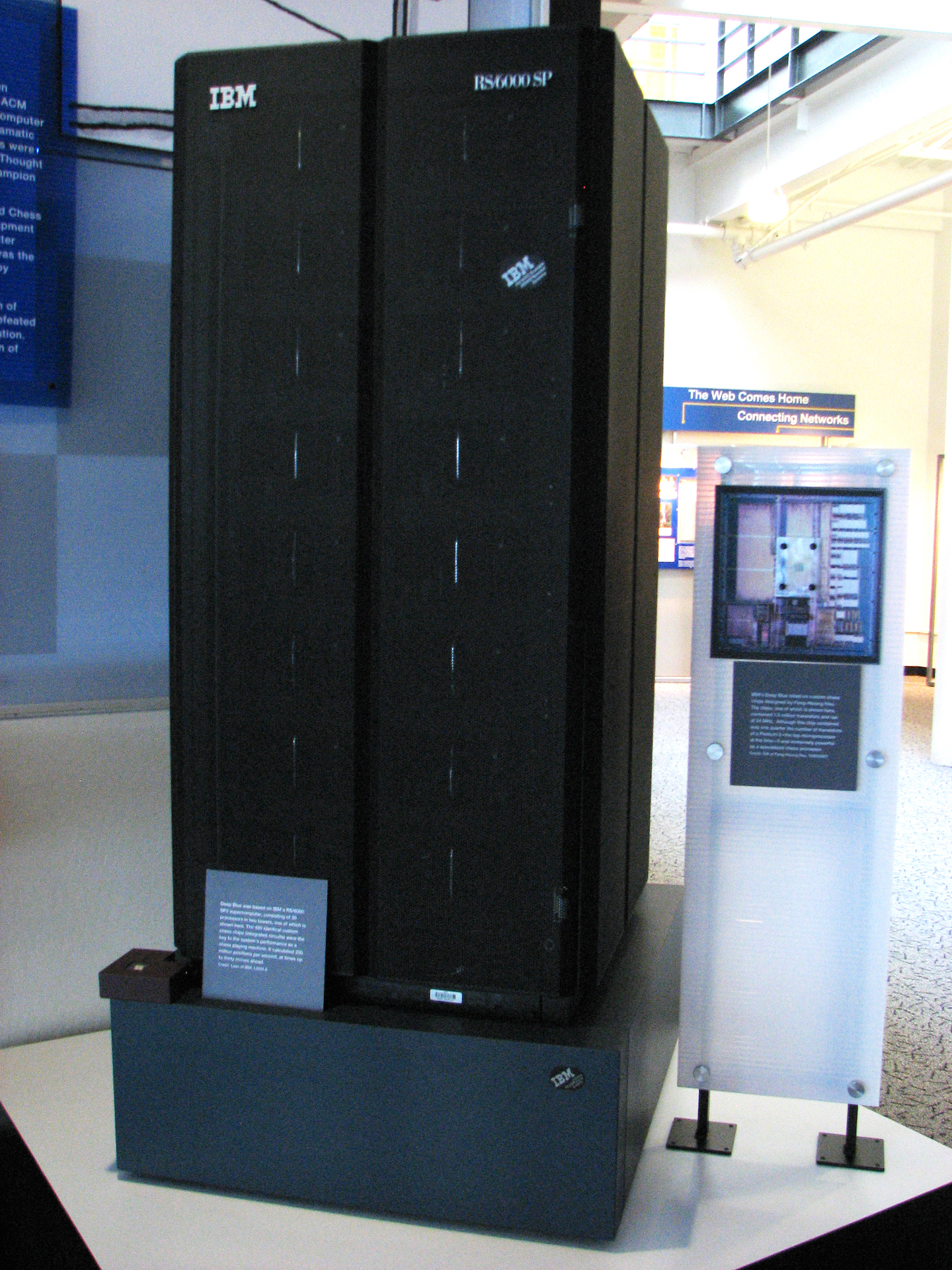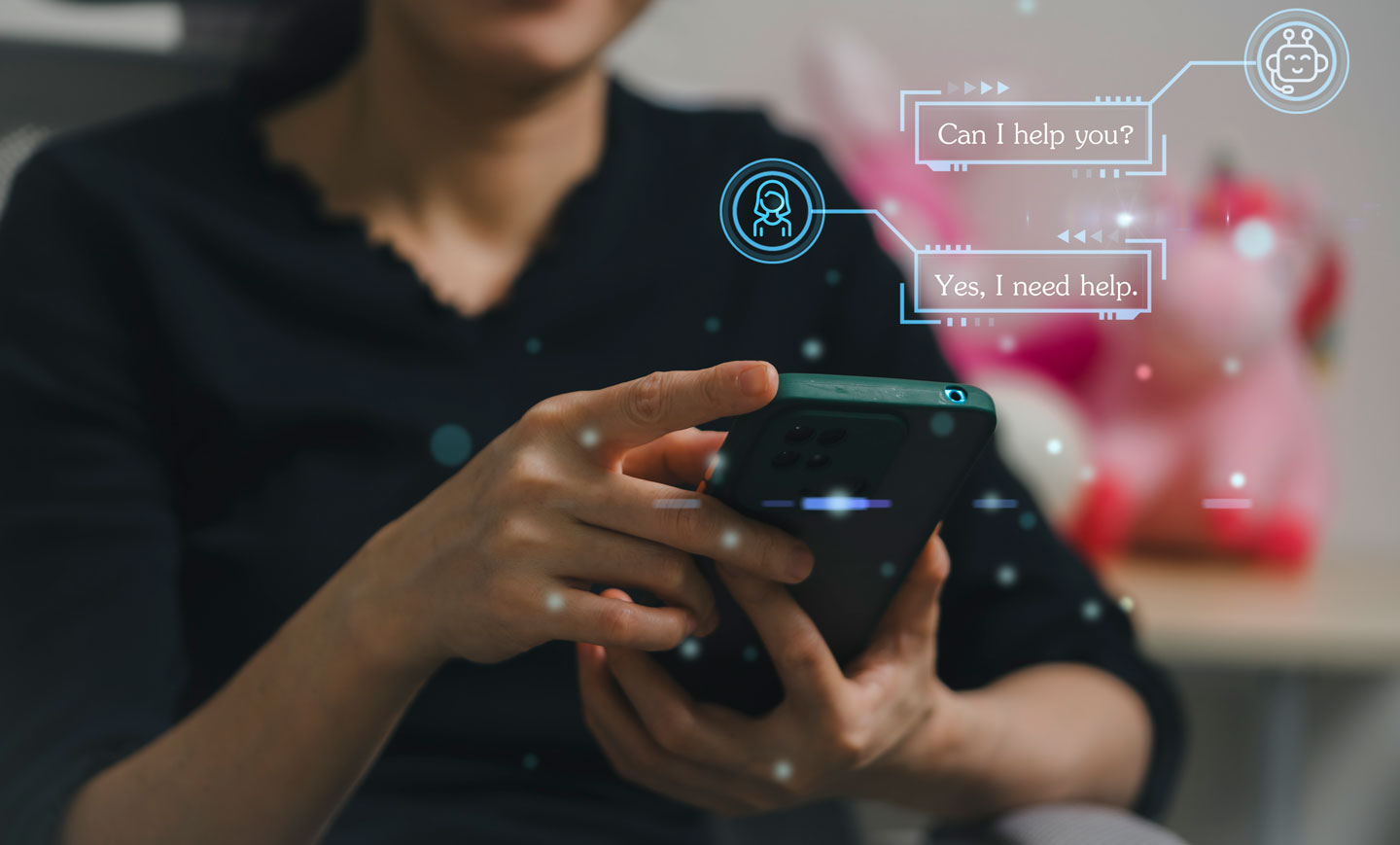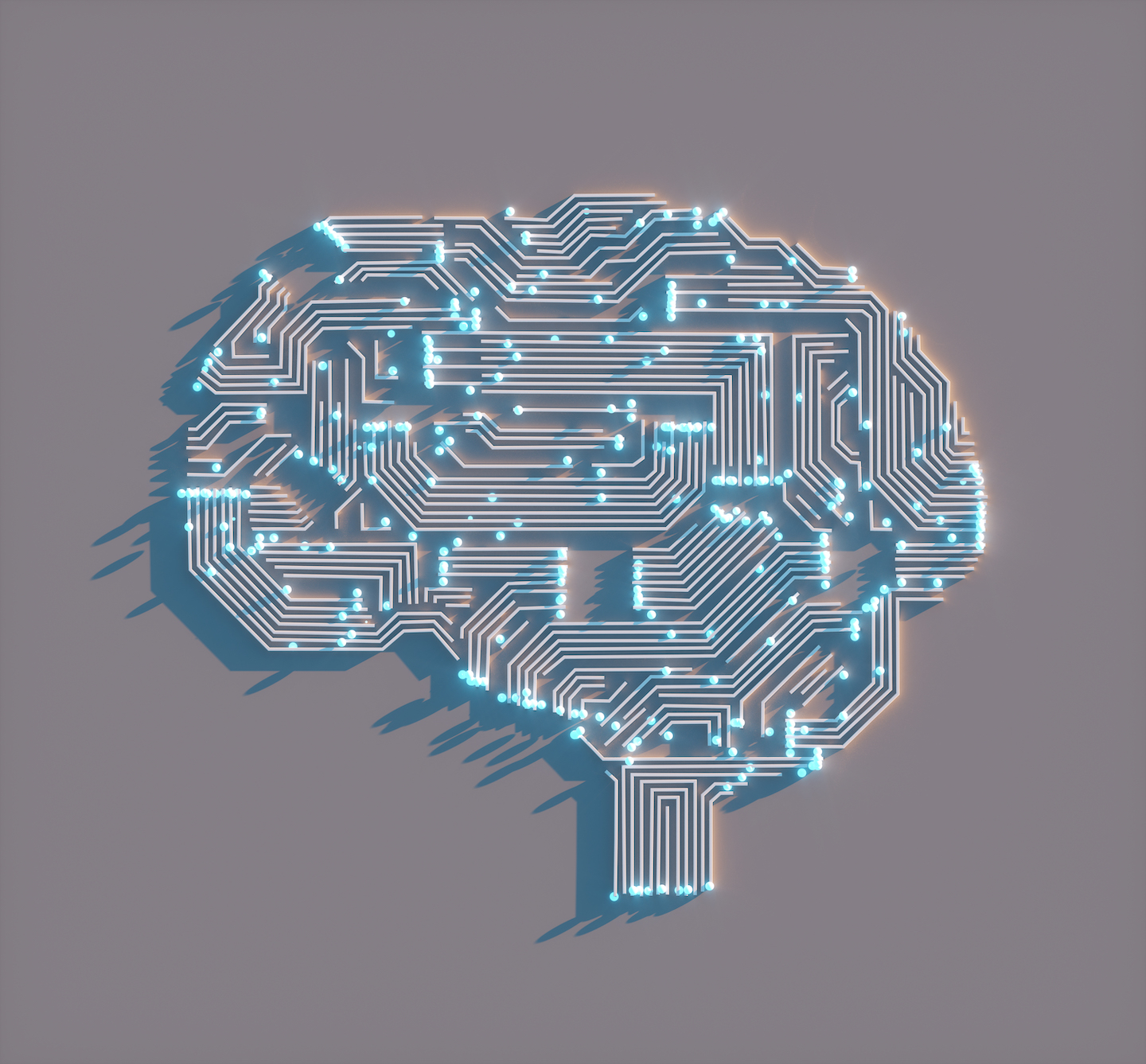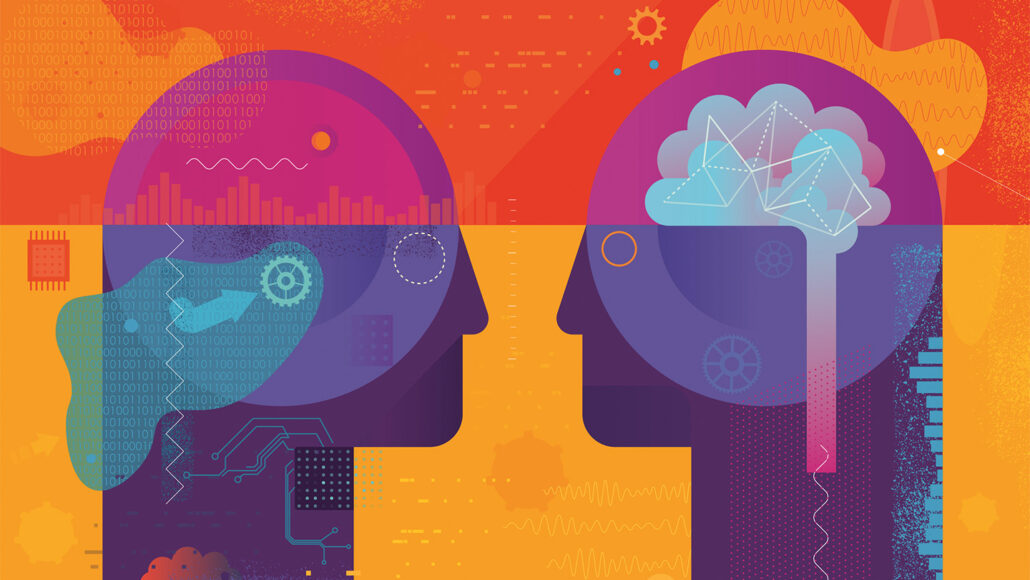Here’s why AI like ChatGPT probably won’t reach humanlike understanding
This type of artificial intelligence isn’t good at applying what it learns to new situations
By Tom Siegfried and Maria Temming
Still, talking to this artificial intelligence, or AI, system can sometimes feel like talking to a human. A pretty smart, talented person at that. ChatGPT can answer questions about math or history on demand — and in a lot of different languages. It can crank out stories and computer code. And other similarly “generative” AI models can produce artwork and videos from scratch.
Let’s learn about artificial intelligence
“These things seem really smart,” said Melanie Mitchell. She’s a computer scientist at the Santa Fe Institute in New Mexico. She spoke at the annual meeting of the American Association for the Advancement of Science. It was held in Denver, Colo., in February.
AI’s increasing “smarts” have a lot of people worried. They fear generative AI could take people’s jobs — or take over the world. But Mitchell and other experts think those fears are overblown. At least, for now.
The problem, those experts argue, is just what ChatGPT says. Today’s most impressive AI still doesn’t truly understand what it is saying or doing the way a human would. And that puts some hard limits on its abilities.
Concerns about AI are not new
At that time, though, it was still easy to show that AI failed miserably at many things we do well. Sure, a computer could play a mean game of chess. But could it diagnose disease? Transcribe speech? Not very well. In many key areas, humans remained supreme.
 A Deep Blue computer similar to this one defeated world chess champion Garry Kasparov in 1997.CHRISTINA XU/WIKIMEDIA COMMONS (CC BY 2.0 DEED)
A Deep Blue computer similar to this one defeated world chess champion Garry Kasparov in 1997.CHRISTINA XU/WIKIMEDIA COMMONS (CC BY 2.0 DEED)About a decade ago, that began to change.
Computer brains — known as neural networks — got a huge boost from a new technique called deep learning. This is a powerful type of machine learning. In machine learning, computers master skills through practice or looking at examples.
Suddenly, thanks to deep learning, computers rivaled humans at many tasks. Machines could identify images, read signs and enhance photographs. They could even reliably convert speech to text.
Yet those abilities had their limits. For one thing, deep-learning neural networks could be easy to trick. A few stickers placed on a stop sign, for example, made an AI think the sign said “Speed Limit 80.” Such “smart” computers also needed extensive training. To pick up each new skill, they had to view tons of examples of what to do.
So deep learning produced AI models that were excellent at very specific jobs. But those systems couldn’t adapt that expertise very well to new tasks. You couldn’t, for instance, use an English-to-Spanish AI translator for help on your French homework.
But now, things are changing again.
“We’re in a new era of AI,” Mitchell says. “We’re beyond the deep-learning revolution of the 2010s. And we’re now in the era of generative AI of the 2020s.”
 The AI behind tools like ChatGPT can do a lot of things — from summarizing text to spell-checking essays. That can make it tempting to use these tools for help on homework or other tasks. But proceed with caution: Because an AI system like ChatGPT doesn’t truly understand what it’s doing the way a human would, it’s also been known to make up information.KRONGKAEW/MOMENT/GETTY IMAGES
The AI behind tools like ChatGPT can do a lot of things — from summarizing text to spell-checking essays. That can make it tempting to use these tools for help on homework or other tasks. But proceed with caution: Because an AI system like ChatGPT doesn’t truly understand what it’s doing the way a human would, it’s also been known to make up information.KRONGKAEW/MOMENT/GETTY IMAGESThis gen-AI era
Generative AI systems are those that can produce text, images or other content on demand. This type of AI can generate many things that long seemed to require human creativity. That includes everything from brainstorming ideas to writing poems.
Many of these abilities stem from large language models — LLMs, for short. ChatGPT is one example of tech based on LLMs. Such language models are said to be “large” because they are trained on huge amounts of data. Essentially, they study everything on the internet, which includes scanned copies of countless print books.
“Large” can also refer to the number of different types of things LLMs can “learn” in their reading. These models don’t just learn words. They also pick up phrases, symbols and math equations.

Here’s a quick rundown of what large language models are and what kinds of things they can do.
By learning patterns in how the building blocks of language are combined, LLMs can predict in what order words should go. That helps the models write sentences and answer questions. Basically, an LLM calculates the odds that one word should follow another in a given context.
This has allowed LLMs to do things such as writing in the style of any author and solving riddles.
Some researchers have suggested that when LLMs accomplish these feats, they understand what they’re doing. Those researchers think LLMs can reason like people or could even become conscious in some sense.
But Mitchell and others insist that LLMs do not (yet) really understand the world. At least, not as humans do.
Mitchell and her colleague Martha Lewis recently exposed one major limit of LLMs. Lewis studies language and concepts at the University of Bristol in England. The pair shared their work at arXiv.org. (Studies posted there have usually not yet been vetted by other scientists.)
LLMs still do not match humans’ ability to adapt a skill to a new situation, their new paper shows. Consider this letter-string problem. You start with one string of letters: ABCD. Then, you get a second string of letters: ABCE.
Most humans can see the difference between the two strings. The final letter in the first string is replaced with the next letter of the alphabet in the second string. So when humans are shown a different string of letters, such as IJKL, they can guess what the second string should be: IJKM.
Most LLMs can solve this problem, too. That’s to be expected. The models have, after all, been well trained on the English alphabet.
But say you pose the problem with a different alphabet. Perhaps you jumble up the letters in our alphabet to be in a different order. Or you use symbols instead of letters. Humans are still very good at solving letter-string problems. But LLMs usually fail. They are not able to take the concepts they learned with one alphabet and apply them to another. All the GPT models tested by Mitchell and Lewis struggled with these kinds of problems.
Other similar tasks also show that LLMs don’t do well in situations they weren’t trained for. For that reason, Mitchell doesn’t believe they show what humans would call “understanding” of the world.
“Being reliable and doing the right thing in a new situation is, in my mind, the core of what understanding actually means,” Mitchell said at the AAAS meeting.
Human understanding, she says, is based on “concepts.” These are mental models of things like categories, situations and events. Concepts allow people to determine cause and effect. They also help people predict the likely results of different actions. And people can do this even in situations they haven’t seen before.
 AI models might someday achieve a truly intelligent understanding of the world. But machine understanding may not look anything like human understanding.BORIS SV/MOMENT/GETTY IMAGES
AI models might someday achieve a truly intelligent understanding of the world. But machine understanding may not look anything like human understanding.BORIS SV/MOMENT/GETTY IMAGES
“What’s really remarkable about people … is that we can abstract our concepts to new situations,” Mitchell said.
She does not deny that AI might someday reach a level of intelligent understanding similar to humans. But machine understanding may turn out to be different from human understanding, she adds. Nobody knows what sort of technology might achieve that understanding. But if it’s anything like human understanding, it will probably not be based on LLMs.
After all, LLMs learn in a way opposite to humans. These models start out learning language. Then, they try to use that knowledge to grasp abstract concepts. Human babies, meanwhile, learn concepts first and then the language to describe them.
So talking to ChatGPT may sometimes feel like talking to a friend, teammate or tutor. But the computerized number-crunching behind it is still nothing like a human mind.
American Association for the Advancement of Science: (or AAAS) Formed in 1848, it was the first permanent organization formed to promote the development of science and engineering at the national level and to represent the interests of all its disciplines. It is now the world’s largest such society. Despite its name, membership in it is open to anyone who believes “that science, technology, engineering, and mathematics can help solve many of the challenges the world faces today.” Its members live in more than 90 nations. Based in Washington, D.C., it publishes a host of peer-reviewed journals — most notably Science.
artificial intelligence: A type of knowledge-based decision-making exhibited by machines or computers. The term also refers to the field of study in which scientists try to create machines or computer software capable of intelligent behavior.
chatbot: A computer program created to seemingly converse with human users. Modern ones (such as Siri, Alexa, Ocelot and Sprinklr) can retrieve information over the internet about news events or classroom topics. Many even work as digital assistants to answer questions about purchases, products or scheduling on behalf of stores, pharmacies or banks.
code: (in computing) To use special language to write or revise a program that makes a computer do something. (n.) Code also refers to each of the particular parts of that programming that instructs a computer's operations.
colleague: Someone who works with another; a co-worker or team member.
context: The setting or circumstances that help explain an event, some statement or some conclusion.
deep learning: A type of machine learning that is used by some computers. It relies on layers of neural networks, circuitry designed to function similarly to the human brain. Those networks sift through big sets of data to find trends. Each layer performs calculations and makes new predictions over and over. Then the system integrates what it’s learned to become “smarter” over time.
diagnose: To analyze clues or symptoms in the search for their cause. The conclusion usually results in a diagnosis — identification of the causal problem or disease.
equation: In mathematics, the statement that two quantities are equal. In geometry, equations are often used to determine the shape of a curve or surface.
intelligence: The ability to collect and apply knowledge and skills.
large language model: (in computing) Language models are a type of machine learning. They attempt to predict upcoming words (in text or speech) and then present those predictions using words that almost anyone should understand. The models learn to do this by reviewing large quantities of text or speech. As their name would imply, large language models train using enormous troves of data. They organize and make sense of those data using “neural nets” — a scheme patterned a bit off of the pathways of nerves in the human brain. Large language models don’t just learn words, but also phrases made of many words. They can even learn from the context in which a new phrase and idea is worded (meaning the words that accompany those phrases or in which those phrases have been embedded).
machine learning: A technique in computer science that allows computers to learn from examples or experience. Machine learning is the basis of some forms of artificial intelligence (AI). For instance, a machine-learning system might compare X-rays of lung tissue in people with cancer and then compare these to whether and how long a patient survived after being given a particular treatment. In the future, that AI system might be able to look at a new patient’s lung scans and predict how well they will respond to a treatment.
model: A simulation of a real-world event (usually using a computer) that has been developed to predict one or more likely outcomes. Or an individual that is meant to display how something would work in or look on others.
neural network: Also known as a neural net. A computer program designed to manage lots of data and in complex ways. These systems consist of many (perhaps millions) of simple, densely linked connections within a computer. Each connection, or node, can perform a simple operation. One node might be connected to several feeder nodes, which send it data. Several more nodes in another layer sit ready to accept the newly processed data and act upon them in some other way. The general idea of networks was initially patterned loosely on the way nerve cells work in the brain to process signals that lead to thought and learning.
system: A network of parts that together work to achieve some function. For instance, the blood, vessels and heart are primary components of the human body's circulatory system. Similarly, trains, platforms, tracks, roadway signals and overpasses are among the potential components of a nation's railway system. System can even be applied to the processes or ideas that are part of some method or ordered set of procedures for getting a task done.
technology: The application of scientific knowledge for practical purposes, especially in industry — or the devices, processes and systems that result from those efforts.
Some researchers have suggested that when LLMs accomplish these feats, they understand what they’re doing. Those researchers think LLMs can reason like people or could even become conscious in some sense.
But Mitchell and others insist that LLMs do not (yet) really understand the world. At least, not as humans do.
Narrow-minded AI
Mitchell and her colleague Martha Lewis recently exposed one major limit of LLMs. Lewis studies language and concepts at the University of Bristol in England. The pair shared their work at arXiv.org. (Studies posted there have usually not yet been vetted by other scientists.)
LLMs still do not match humans’ ability to adapt a skill to a new situation, their new paper shows. Consider this letter-string problem. You start with one string of letters: ABCD. Then, you get a second string of letters: ABCE.
Most humans can see the difference between the two strings. The final letter in the first string is replaced with the next letter of the alphabet in the second string. So when humans are shown a different string of letters, such as IJKL, they can guess what the second string should be: IJKM.
Most LLMs can solve this problem, too. That’s to be expected. The models have, after all, been well trained on the English alphabet.
But say you pose the problem with a different alphabet. Perhaps you jumble up the letters in our alphabet to be in a different order. Or you use symbols instead of letters. Humans are still very good at solving letter-string problems. But LLMs usually fail. They are not able to take the concepts they learned with one alphabet and apply them to another. All the GPT models tested by Mitchell and Lewis struggled with these kinds of problems.
Other similar tasks also show that LLMs don’t do well in situations they weren’t trained for. For that reason, Mitchell doesn’t believe they show what humans would call “understanding” of the world.
The importance of understanding
“Being reliable and doing the right thing in a new situation is, in my mind, the core of what understanding actually means,” Mitchell said at the AAAS meeting.
Human understanding, she says, is based on “concepts.” These are mental models of things like categories, situations and events. Concepts allow people to determine cause and effect. They also help people predict the likely results of different actions. And people can do this even in situations they haven’t seen before.
 AI models might someday achieve a truly intelligent understanding of the world. But machine understanding may not look anything like human understanding.BORIS SV/MOMENT/GETTY IMAGES
AI models might someday achieve a truly intelligent understanding of the world. But machine understanding may not look anything like human understanding.BORIS SV/MOMENT/GETTY IMAGES“What’s really remarkable about people … is that we can abstract our concepts to new situations,” Mitchell said.
She does not deny that AI might someday reach a level of intelligent understanding similar to humans. But machine understanding may turn out to be different from human understanding, she adds. Nobody knows what sort of technology might achieve that understanding. But if it’s anything like human understanding, it will probably not be based on LLMs.
After all, LLMs learn in a way opposite to humans. These models start out learning language. Then, they try to use that knowledge to grasp abstract concepts. Human babies, meanwhile, learn concepts first and then the language to describe them.
So talking to ChatGPT may sometimes feel like talking to a friend, teammate or tutor. But the computerized number-crunching behind it is still nothing like a human mind.
Power Words
abstract: Something that exists as an idea or thought but not concrete or tangible (touchable) in the real world. Beauty, love and memory are abstractions; cars, trees and water are concrete and tangible.
American Association for the Advancement of Science: (or AAAS) Formed in 1848, it was the first permanent organization formed to promote the development of science and engineering at the national level and to represent the interests of all its disciplines. It is now the world’s largest such society. Despite its name, membership in it is open to anyone who believes “that science, technology, engineering, and mathematics can help solve many of the challenges the world faces today.” Its members live in more than 90 nations. Based in Washington, D.C., it publishes a host of peer-reviewed journals — most notably Science.
artificial intelligence: A type of knowledge-based decision-making exhibited by machines or computers. The term also refers to the field of study in which scientists try to create machines or computer software capable of intelligent behavior.
chatbot: A computer program created to seemingly converse with human users. Modern ones (such as Siri, Alexa, Ocelot and Sprinklr) can retrieve information over the internet about news events or classroom topics. Many even work as digital assistants to answer questions about purchases, products or scheduling on behalf of stores, pharmacies or banks.
code: (in computing) To use special language to write or revise a program that makes a computer do something. (n.) Code also refers to each of the particular parts of that programming that instructs a computer's operations.
colleague: Someone who works with another; a co-worker or team member.
context: The setting or circumstances that help explain an event, some statement or some conclusion.
deep learning: A type of machine learning that is used by some computers. It relies on layers of neural networks, circuitry designed to function similarly to the human brain. Those networks sift through big sets of data to find trends. Each layer performs calculations and makes new predictions over and over. Then the system integrates what it’s learned to become “smarter” over time.
diagnose: To analyze clues or symptoms in the search for their cause. The conclusion usually results in a diagnosis — identification of the causal problem or disease.
equation: In mathematics, the statement that two quantities are equal. In geometry, equations are often used to determine the shape of a curve or surface.
intelligence: The ability to collect and apply knowledge and skills.
large language model: (in computing) Language models are a type of machine learning. They attempt to predict upcoming words (in text or speech) and then present those predictions using words that almost anyone should understand. The models learn to do this by reviewing large quantities of text or speech. As their name would imply, large language models train using enormous troves of data. They organize and make sense of those data using “neural nets” — a scheme patterned a bit off of the pathways of nerves in the human brain. Large language models don’t just learn words, but also phrases made of many words. They can even learn from the context in which a new phrase and idea is worded (meaning the words that accompany those phrases or in which those phrases have been embedded).
machine learning: A technique in computer science that allows computers to learn from examples or experience. Machine learning is the basis of some forms of artificial intelligence (AI). For instance, a machine-learning system might compare X-rays of lung tissue in people with cancer and then compare these to whether and how long a patient survived after being given a particular treatment. In the future, that AI system might be able to look at a new patient’s lung scans and predict how well they will respond to a treatment.
model: A simulation of a real-world event (usually using a computer) that has been developed to predict one or more likely outcomes. Or an individual that is meant to display how something would work in or look on others.
neural network: Also known as a neural net. A computer program designed to manage lots of data and in complex ways. These systems consist of many (perhaps millions) of simple, densely linked connections within a computer. Each connection, or node, can perform a simple operation. One node might be connected to several feeder nodes, which send it data. Several more nodes in another layer sit ready to accept the newly processed data and act upon them in some other way. The general idea of networks was initially patterned loosely on the way nerve cells work in the brain to process signals that lead to thought and learning.
system: A network of parts that together work to achieve some function. For instance, the blood, vessels and heart are primary components of the human body's circulatory system. Similarly, trains, platforms, tracks, roadway signals and overpasses are among the potential components of a nation's railway system. System can even be applied to the processes or ideas that are part of some method or ordered set of procedures for getting a task done.
technology: The application of scientific knowledge for practical purposes, especially in industry — or the devices, processes and systems that result from those efforts.
CITATIONS
Preprint: M. Lewis and M. Mitchell. Using counterfactual tasks to evaluate the generality of analogical reasoning in large language models. arXiv:2402.08955. Submitted February 14, 2024
Preprint: M. Lewis and M. Mitchell. Using counterfactual tasks to evaluate the generality of analogical reasoning in large language models. arXiv:2402.08955. Submitted February 14, 2024
Maria Temming is the Assistant Managing Editor at Science News Explores. She has bachelor's degrees in physics and English, and a master's in science writing.
Source: [ ScienceNewsExplores ]
Note: [Content may be edited for style and length.]
